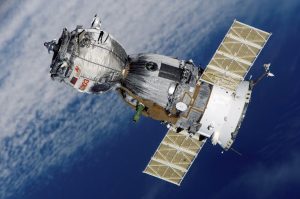UN Partners Launch Major Connectivity Initiative for Refugees in Chad
The United Nations, alongside key partners such as the International Telecommunication Union (ITU) and GSMA, has ramped up efforts to provide affordable digital connectivity to refugees and host communities across Chad and other nations. This bold initiative, known as ‘Connectivity for Refugees’ (CfR), aims to connect millions of forcibly displaced individuals and their local communities within the next five years, addressing critical connectivity gaps in some of the world’s most vulnerable regions.
Accelerating Connectivity for Refugees Across Africa

Pexels
Initially launched in 2023, the CfR program has evolved into a robust public-private partnership encompassing countries like Chad, Ethiopia, Uganda, Mauritania, Egypt, and Rwanda. The initiative’s ultimate objective is connecting 20 million refugees and neighboring host communities by 2030. This ambitious goal requires not only regulatory reforms but also an influx of significant investment, with CfR seeking $20 million in core support alongside $200 million in direct investments. During a recent mission to Chad, representatives from UNHCR, ITU, and GSMA moved to finalize frameworks that will drive these efforts forward, ensuring both digital inclusion and long-term resilience.
Integrating Refugee Needs into National Digital Strategies

Pexels
Chad stands at the forefront of these efforts, hosting 1.5 million refugees, primarily from Sudan, within its borders. The Chadian government’s ‘Tchad Connexion 2030’ plan emphasizes integrating refugee needs into broader national digital infrastructure strategies. Local mobile operators, such as Airtel Chad and Moov, have already begun upgrading infrastructure to connect underserved and isolated regions, particularly in the east of the country. Meanwhile, the deployment of Emergency.LU—a Luxembourg-funded satellite-based connectivity initiative—is revolutionizing access in refugee settlements like Djabal, Farchana, Idrimi, and Oure Cassoni, turning these areas into learning and community hubs.
Transforming Lives Through Scalable Solutions

Pexels
For forcibly displaced populations, connectivity is more than a luxury; it is often a lifeline. John Giusti, President of the GSMA Mobile for Development Foundation, has highlighted that access to digital networks is one of the first demands of refugees upon crossing borders, as it facilitates safety, communication, and access to essential services. As a founding member of CfR, the GSMA is actively working to scale up sustainable connectivity solutions, enabling trust and collaboration between public and private sectors in achieving these goals. Additionally, partnerships with global giants, including the World Bank and International Finance Corporation (IFC), are paving the way for large-scale digital infrastructure projects to extend their impact to refugee communities.
A Path Toward Inclusive Communities

Pexels
The CfR initiative underscores the critical role of connectivity in creating resilient, inclusive communities. According to UNHCR Deputy High Commissioner Kelly T. Clements, the program has already begun delivering tangible results, but ongoing efforts and resources are required to maintain momentum. With the integration of refugee needs into national digital development plans and strengthened collaborations across sectors, the United Nations and its partners are paving the way for a more connected, equitable future.


